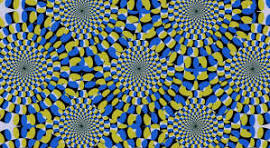Imagine that you feel a burning pain.
Let's ask the question from the start, and develop some context afterwards:
- Is it possible that what we call conscious feeling of burning and pain, just don't exist ?
For example in Functionalism SEP's entry, a similar idea is described:
For (an avowedly simplistic) example, a functionalist theory might characterize pain as the state that tends to be caused by bodily injury, to produce the belief that something is wrong with the body and the desire to be out of that state, to produce anxiety, and, in the absence of any stronger, conflicting desires, to cause wincing or moaning
What if those feelings, once we look very, very carefully, are just labels, but aren't there in the traditional sense? They could be a set of processes and some meta-process (higher in the hierarchy) that labels them.
But then, there can not be any burning sensation, and that should be a cultural, evolved illusion.
In which ways could we imagine, try to understand, that our own feelings (whatever is not observer from 3rd person PoV) could be an illusion ?
How far do we have to stretch it to accept that a burning pain could be an illusion ?
If there is no burning, but only a label, and a conviction that there is pain, pretty much as when we believe we saw a person, but we may have had only the processes that correspond to 'yes' or 'no doubts' running.
Next sections are only some extra context that I find closely related.
The 3rd person perspective
Clearly, from the outside, there isn't any pain. Pain is in the person experiencing. But also can be inferred or hypothesise to exist in other animals like a dog or a cat, or maybe most mammals.
From the third person PoV it may involve screaming, contortions, strong change in behaviour and response, and so on.
Illusions
That's not moving. It's an illusion. An illusion needs an accepted truth, in this case considered the knowledge about what is the image.
Indeed an analysis of our brain will show some of the 'movement tellers' running.
In a similar way, a person may describe seeing certain colour that was not there from a third person point of view.
We are seeing the power of creation of the brain, in the same way that certain image patterns seem to move, when they are frozen (just images.)
What is seen corresponds to a mix between something external (see next section), and our own internal (brain) states.
Another aspect is the pure 'creation' that we see in dreams, where there isn't likely an external input.
Out there, there are some things
The brain couldn't just simulate all of experience. For that, due to the complexity of the task, we would need a supercomputer.
We conclude that, at least, there is something out there, although that's not exactly our experience of it. (See Daniel Dennett's Consciousness Explained, chapter 1 for more details.)

